Class 10 Exam > Class 10 Notes > Biology for GCSE/IGCSE > Biotechnology
Biotechnology | Biology for GCSE/IGCSE - Class 10 PDF Download
Everyday Products Made with Biotechnology
Biofuels
- Yeast is a single-celled fungus that utilizes sugar as its food source.
- During respiration, yeast produces ethanol, carbon dioxide, and releases energy.
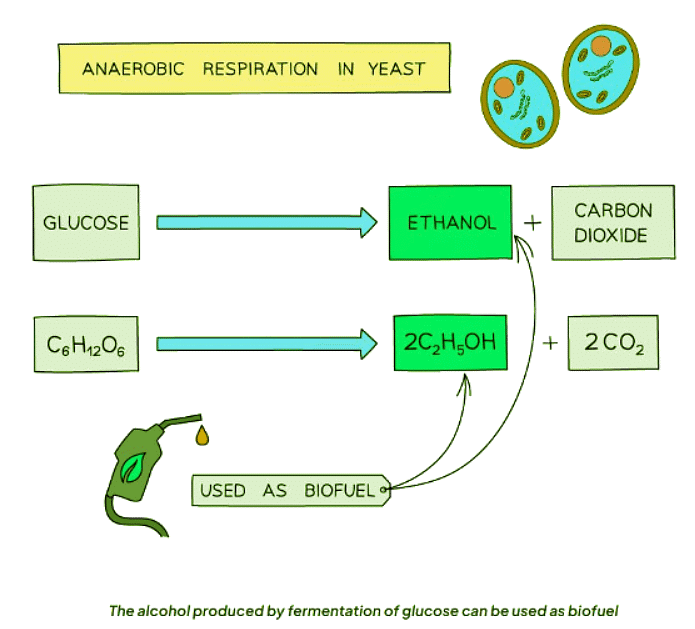
- The ethanol produced in this reaction is increasingly being used as a biofuel. Biofuel is a type of fuel made from living organisms rather than fossil fuels like oil, coal, or gas.
- In countries like Brazil, biofuel is gradually replacing petrol as the fuel for cars and other vehicles.
- Plant material serves as the substrate for producing ethanol, acting as a source of glucose. It undergoes a process where it is chopped into small pieces and mixed with yeast. The yeast then respires anaerobically and produces ethanol.
- After the process, the liquid is separated from the remaining solids, and any water present is eliminated, resulting in a concentrated ethanol solution.
- Sometimes, the waste parts of crop plants, such as stalks or outer leaves, are utilized for ethanol production. In some regions, specific crops are grown solely for the purpose of making ethanol.
- However, this trend is raising concerns in certain areas due to the diminishing availability of land for local people to grow essential food crops needed for survival.
Bread
- Yeast can undergo anaerobic respiration in the presence of an abundance of sugar, even when oxygen is present.
- This phenomenon is utilized in bread production. During bread making, yeast is combined with flour and water, carrying out anaerobic respiration and generating carbon dioxide.
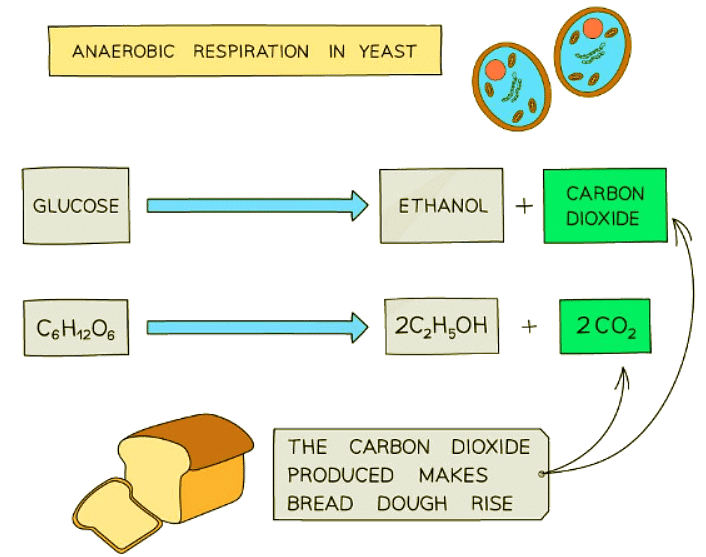
- The carbon dioxide produced as a result of the fermentation (anaerobic respiration) of glucose is responsible for causing bread dough to expand.
- The carbon dioxide produced by the yeast during respiration becomes trapped in the dough, leading to the rising of the bread.
Fruit Juice
- Fruit juice is created through the extraction of juice from fruits.
- Chopping fruits before squeezing aids in maximizing juice extraction, although not all cells are ruptured, leading to some juice loss.
- Introduction of pectinase enzyme to chopped fruits enhances juice yield.
- Pectinase functions by decomposing pectin, a substance present in plant cell walls.
- Breakdown of pectin facilitates easier rupture of cell walls, enabling more efficient juice extraction.
- Utilizing pectinase results in clearer juice by disintegrating larger polysaccharides like pectin, which may cause cloudiness.
Biological Washing Powders
- Many stains on clothes are organic molecules - such as oil from skin, protein from blood, fat, and protein from food.
- Detergents that solely contain soap can eliminate some organic stains when combined with hot water. However, this process may require significant time, effort, and high temperatures for complete removal.
- Biological washing powders feature enzymes akin to those found in our digestive system. These enzymes aid in breaking down large food molecules.
- Using biological washing powders has several advantages, including:
- By efficiently reducing complex substances into simpler forms, detergents facilitate their removal from clothes during washing.
- Effectiveness at lower temperatures: These detergents work well even in cold water, requiring less energy for heating. This not only saves money but also helps in eco-friendly washing practices.
- Applicability for delicate fabrics: They are gentle enough to clean fragile materials that cannot withstand high-temperature washing cycles, ensuring the longevity of such garments.
Question for BiotechnologyTry yourself: How is yeast used in bread production?View Solution
Other Uses of Biotechnology
- Lactose, the natural sugar in milk, can cause digestive issues in individuals who lack the enzyme lactase needed to break it down.
- While newborns can naturally produce lactase, many adults lose this ability over time, leading to lactose intolerance.
- Common symptoms of lactose intolerance include nausea, gas, and diarrhea due to the body's inability to digest lactose.
- To make milk suitable for lactose-intolerant individuals, lactase enzyme can be added to break down the lactose.
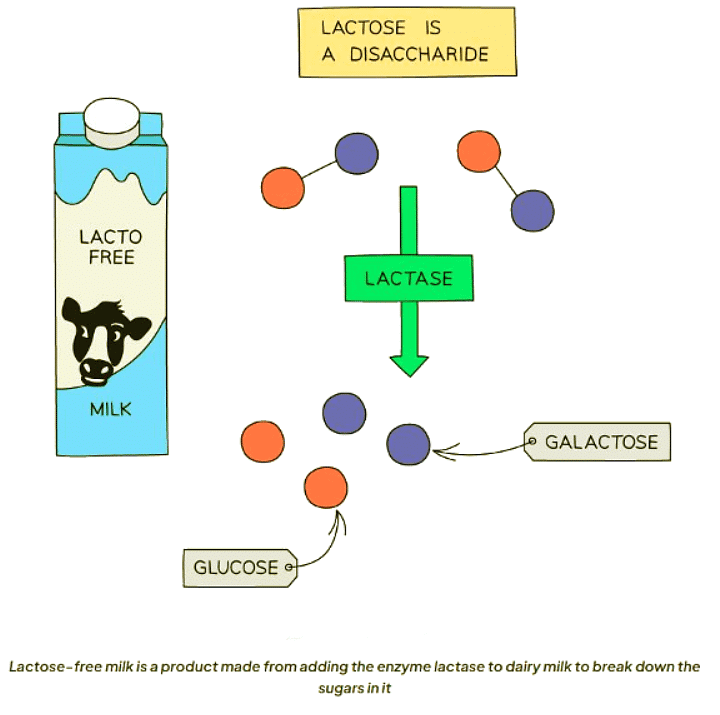
Penicillin Production
- Penicillin, the inaugural antibiotic, was discovered in 1928 by Alexander Fleming.
- Alexander Fleming observed that certain bacteria in a Petri dish had been eradicated by the naturally occurring Penicillium mold.
- The Penicillium mold secretes a substance that shields it from specific types of bacteria.
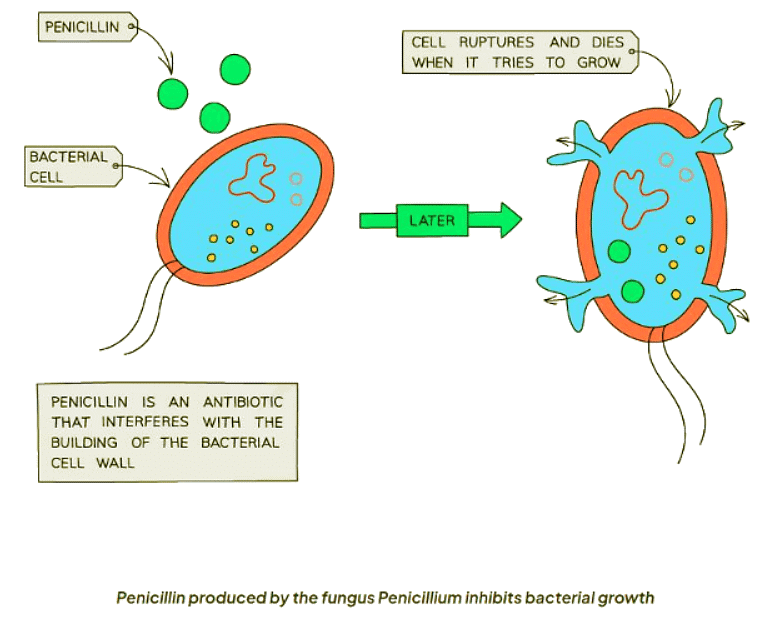
- The compound was isolated and named penicillin.
- Following the discovery of penicillin, techniques have been devised to mass-produce it using an industrial fermenter.
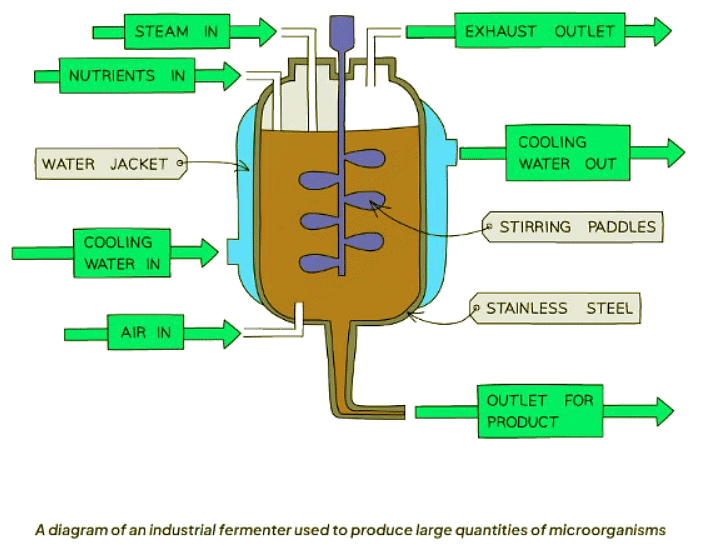
- Fermenters are containers utilized to cultivate microorganisms like bacteria and fungi in large quantities.
- These microorganisms are crucial for various biotechnological processes, such as producing genetically modified bacteria and penicillium mold for penicillin.
- The controlled conditions in a fermenter enable the production of precise quantities of the desired microorganism.

Mycoprotein – the process of creating food from a fungus
- The fungus Fusarium is intentionally grown on a large scale in specialized containers known as fermenters.
- These fermenters, which are essentially large vats, are carefully maintained at the ideal pH and temperature to facilitate the growth of Fusarium.
- Fusarium thrives in aerobic conditions, meaning it requires oxygen to grow. Additionally, it is supplied with glucose syrup as a nutrient source to support its respiratory processes.
- Within the fermenter, the fungus undergoes growth and reproduction, leading to the accumulation of fungal biomass.
- The harvested fungal biomass is subsequently purified to yield mycoprotein, a protein-rich food product.
- Mycoprotein serves as a valuable dietary option for vegetarians and finds applications in products like Quorn TM.
Production of Insulin
- Genetic modification involves altering the genetic material of an organism by either removing, altering, or inserting genes from another organism.
- The organism that undergoes genetic modification is termed as 'genetically modified' or a 'transgenic organism'.
- When the DNA of an organism contains genetic material from another organism, it is referred to as 'recombinant DNA'.
- An example of genetic modification is the insertion of the human insulin gene into bacteria. The modified bacteria can then produce human insulin, which is harvested and purified for medical use in treating individuals with diabetes.
The document Biotechnology | Biology for GCSE/IGCSE - Class 10 is a part of the Class 10 Course Biology for GCSE/IGCSE.
All you need of Class 10 at this link: Class 10
|
101 videos|193 docs|33 tests
|
FAQs on Biotechnology - Biology for GCSE/IGCSE - Class 10
| 1. How is ethanol produced as a biofuel? |  |
Ans. Ethanol is produced as a biofuel through the fermentation of sugar by yeast. This process converts the sugar into ethanol and carbon dioxide, which can then be extracted and used as a fuel source.
| 2. What is the main purpose of using biotechnology in the production of fruit juice? |  |
Ans. Biotechnology is used in the production of fruit juice to enhance the flavor, nutritional content, and shelf life of the juice. It helps in maintaining the quality of the juice by controlling the fermentation process and reducing the risk of spoilage.
| 3. How do washing detergents break down molecules to remove stains from clothes? |  |
Ans. Washing detergents contain enzymes that break down molecules such as proteins, fats, and starches present in stains on clothes. These enzymes help to loosen the stain particles from the fabric, making it easier to wash them away during the cleaning process.
| 4. What are some other uses of biotechnology besides the production of ethanol and fruit juice? |  |
Ans. Some other uses of biotechnology include the production of lactose-free milk through the modification of milk proteins, the use of industrial fermenters to produce various products such as antibiotics and enzymes, and genetic modification to create recombinant DNA for medical and agricultural purposes.
| 5. How does genetic modification play a role in biotechnology and the production of recombinant DNA? |  |
Ans. Genetic modification involves altering the genetic material of an organism to introduce new traits or characteristics. In biotechnology, genetic modification is used to create recombinant DNA by combining DNA from different sources to produce proteins or enzymes with specific functions, such as in the production of insulin or vaccines.
Related Searches




















